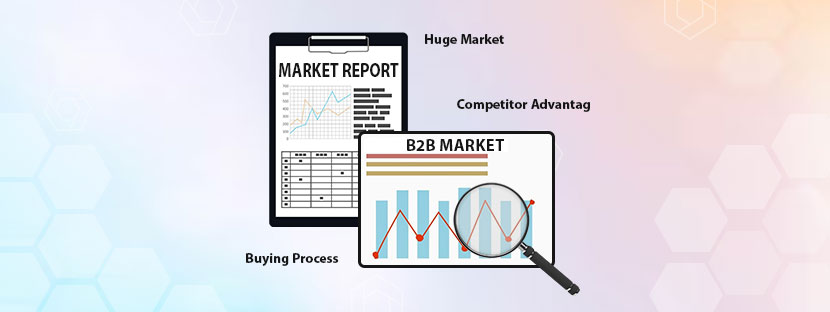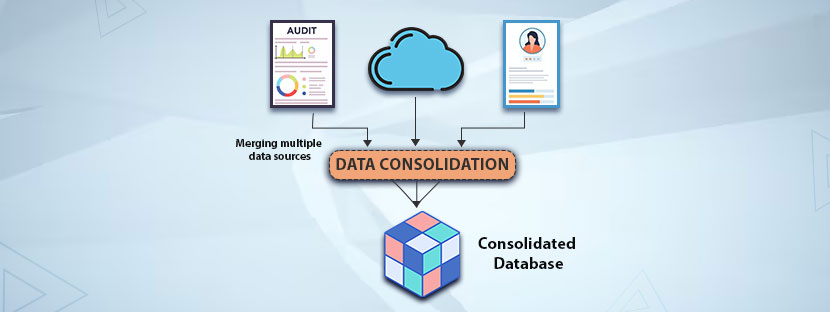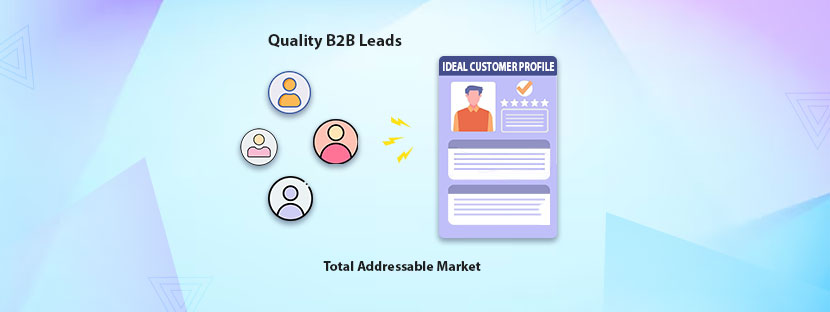The sole purpose of B2B market research is to study the market and understand the audience. B2B market research is a process of collecting information that is connected to the B2B market. It involves various methods from surveys, interviews, focus group studies, to data analysis, and many other things.
After conducting the market research, the next part is assessing the data. After the assessment, the market research data reveals crucial elements. It helps B2B companies in various strategic work, like product development, marketing, pricing, sales, and so on.
Market research is a strategic tool that helps businesses understand how their potential audience thinks, feels, and behaves. Considering all these matters in the decision-making process helps businesses to target the market more effectively.
In short, market research for b2b predicts future trends and provides an option to tackle issues before they happen.
B2B Market Research vs B2C Market Research
From the perspective of the purchasing decision, the very basic difference between B2B and B2C lies when we see who makes the decision.
In B2C, there is one customer that businesses need to convince. But in B2B, there is a whole range of decision-makers (usually more than one) that you have to convince for a purchase. Usually, B2B is far more complex than B2B, and it absolutely reflects in the market research.
The decision-making factor is just at the initial phase, but there are many other differences between B2B and B2C market research. Let’s understand them in the following segment.
| Topic of differences | Business to Business (B2B) | Business to Consumer (B2C) |
|---|---|---|
| Buyer’s Journey | People jointly make the decision here. The size of the group varies. Usually, from 6 to 10 professionals. Each of these members represents different values and influences the decision. Thus, the seller has to consider all of the group members and collect data accordingly. | Typically, there is a single customer that companies have to nurture. Therefore, the market research only focuses on a single person and collects data in accordance with that. |
| Sales Cycle | Longer sales cycles. It ranges from 3 to 9 months | Quick sales cycles; rather, immediately if the buyers are impulsive |
| Price Models | Higher price cap. But the price model is often complex and difficult to decode at the beginning. Since the pricing is complex, it takes more time, energy, and critical thinking before making any purchase. | Simple pricing model. Another term is straightforward. It makes people less confused and makes a direct purchase. |
| Product Complexities | B2B operations are themself complex. So, they require a complete package of products. Rather than a singular product, B2B sellers offer multiple products under one category. Naturally, it increases product complexities. | Simple and targeted products are available in B2C. Primarily, businesses push one product at a time to customers. |
| Customer Base | The size of the market is smaller, but broad. For example, a packet of cookies can be marketed across the world, but the companies are fewer that make and promote cookies globally. In B2B, only the companies that make cookies are going to be covered. | The size of the market is huge. But it targeted only a similar set of people who have similar interests. |
While conducting the market research, all the facts stated above need to be considered. If the research is for B2B companies, research methods and tactics will be changed. As you have seen, the complexity of the B2B market is greater than B2C market. Almost nothing is similar between the two markets. Henceforth, market research methods cannot be the same. Right?
Why do Businesses Conduct B2B Marketing Research?
Very basic question. But you should have clarity on this.
B2B companies conduct market research for various purposes, primarily to understand their targeted audience. However, the objectives vary in different matters. Let’s categorize the objectives first and then check what things are included under each of these objectives.
Objective 1: Segmenting the Market
The B2B market is huge. Considering all companies as the target never really works. Segmenting the B2B market and targeting them individually helps. At that time, market research comes into the picture. It helps segment the market based on different parameters. Plus, market research helps develop –
Objective 2: Understand the buying process
As discussed before, the buying process in B2B is different. Market research is the only way to understand the buying process more comprehensively. It’s also important to consider market research because each company applies different measures to complete the buying process. And these processes are not explained anywhere.
Let’s understand the buying process more comprehensively through the following details that market research helps you to reveal.
Objective 3: Building a brand
Building a strong brand presence is crucial for B2B to operate. Market research strongly helps brands to build their presence. It collects information from the businesses on various things that help B2B companies understand –
🔸Perception of a brand
🔸What makes a brand different from its competitors
🔸How a business represents itself as a brand
🔸What makes people keep coming back to the brands
🔸What constitutes a brand architecture
🔸How the brand messaging framework works
Objective 4: Develop services and products
Every business conducts comprehensive market research before developing its services and product offerings. It exclusively helps develop the products and services that fulfill the customer demands.
➥ Developing product concepts
➥ Testing product concepts
➥ Justify pricing and cost-to-profit balance
➥ Predicting the market or forecasting
Objective 5: Content development and promotions
Even if the brand is established and the products are doing better, companies still require metrics to promote their brands and their products. Market research is fundamental to marketing operations. From content development to closing deals, market research helps everywhere.
- Finding key topics that maximize audience engagement & framing the content strategy around it
- Helps publish research-backed content
- Reframe the existing content strategy
Benefits of B2B Market Research
Market research is a vital process for every business, not only the B2B. However, B2B requires market research more than any other domain. In this section, we are going to explore what are the benefits of conducting market research that B2B companies exclusively enjoy.
➣ Better ROI
Strong market research immensely helps B2B companies in marketing and sales operations. Personalized sales attempts are one of the best measures you can take if you follow the market research data. For example, through surveys, you can find your targeted customer names, their likes, their preferences, etc. So, you can use the data when targeting them.
Hey member,
I have an interesting offer only for you.
Hey John.
I know you’re an AI enthusiast, so I have to tell you this…
Which one will have more engagement?
Obviously, the latter one. Because we have added personalized campaigns can boost response rate up to 135% if you use them rationally. Market research does that. You can get whatever information you want legally through B2B market research.
Hence, it’s natural that the money you spent on market research will definitely pay you off. Return on investment is quite high here.
➣ Update customers’ mindset
Again, once you’re done with the business research and keep the data aside, it does not work well. Rather, it’s a constant process, and you need to be involved here regularly. Because the needs and desires of your potential customers may change over time. In B2B, the mindset of the decision-makers changed very often because there are more people involved in any single deal.
To keep it up, tracking the customer behavior is necessary. Business research helps you stay ahead of any new developments and keeps you updated about market fluctuations.
➣ Monitor performances
Market research provides companies with a scope to judge how a company is performing. They conduct surveys or any other forms of market research every quarter to check how their products or services are valuing their customers. It’s more like asking current customers or potential customers how you’re doing on a regular basis.
Thus, it helps companies to come up with a tailored approach for marketing operations. It also helps achieve those competitive advantages. Market research is more like a solid process for getting everything on the right path. Rather than guessing how your operations are doing, you can get your proof of success or failure as well.
➣ Identifying competitor advantage
Market research is the best measure to identify potential areas where you need to focus. It helps companies to understand what their competitive advantages are. Not the guesswork, but it reveals the best things and the worst things of a company in real terms. Once you identify the key areas or the competitive advantages, you can strengthen your business operations accordingly.
Research methods for B2B operations
Think a little differently. Researching the market is more like doing the homework before launching any campaign. Businesses can utilize different methods and techniques to conduct market research. Let us check what methods are available to you for doing the market research.
➣ Primary B2B research methods
When businesses collect data directly through surveys or any other measures, it comes under a primary survey measure. Here, brands speak directly with the audience. So they get words directly from the participants’ mouths. The best part of this method, you’ll get data in a raw format.
Surveys are a popular tool for conducting primary research. Companies use various survey processing tools to assess the responses collected through the research.
On the downside, B2B participants may not feel like responding to your research. Usually, they’re the busiest people and have less time to do all these things. Hence, you need to make your research quick, easy, and engaging. You’ll get their attention and the information from them.
➣ Secondary B2B research methods
Unlike the primary research, the concerned company does not do the secondary research. Basically, a third party does the research here. The concerned company only takes the research findings.
Interestingly, the third party that has done the research may or may not connect with the concerned company. The concerned company takes the research findings from the public web where third parties have published their research.
The following measures are the most popular ones in secondary survey research;
- Focus groups
- Interviews
- Published journals
Now, coming to the best part, conducting secondary research consumes less time and resources than other methods. The costing part is also very less in this method. You have the option to choose multiple research findings together for your research further. Interviews work better in the B2B vertical than random surveys. Because the B2B audience prefers a more personalized experience.
Well, as a consequence of the secondary research, we can say that it produces bias. It’s obvious that when you conduct personalized interviews, it will reveal different points of view, which can sometimes divert the research findings.
How Companies Utilize B2B Market Research
How to Conduct B2B Market Research
Market research in the B2B vertical is being conducted via various methods and tactics. Let’s decode those measures in some simple steps.
➣ Identify research topic
Rules and methods are there in the B2B market research domain. If you follow them thoroughly, it will ease your market research. For example, to identify research topics, you can use either of the following measures. It helps reveal the research patterns and trends.
- Exploratory Research: It aims to cover a broad sense. Therefore, it requires adding open-ended questions to this research.
- Specific Research: It aims to find a solution for a specific problem. This approach is more structured and backed by quantitative research.
Choose any of the above techniques to identify your research topics and lay out the other plans.
➣ Choosing your participants
More than half of your market research will be done when you select the right sample size. Thus, you have to screen your participants carefully before you carry out the research.
Companies often choose suitable measures from the following list when it comes to selecting participants for B2B international market research.
i. Asking your customers: It’s easy and safe to ask your existing customers to participate in the research. Also, it’s more convincing to ask the people who have already walked on your shown path.
ii. Advertise it: Use your website, trade community, or trade journals to share your survey links. It will help you collect anonymous responses from a diverse range of audiences.
iii. Create your own panel: Having your own panel of B2B audience is more like having some fixed people as your participants.
iv. Source from competitors’ contracts: Use your competitors’ clientele to have a list of important B2B contacts. Conduct your market research on them for better results.
➣ Frame questions and engage participants
Choosing the right questions is important based on your goals. In B2B research, personalization works better; hence, your questions should be aligned with that. Personalized questions also engage participants better and help achieve a better response rate. Delivering incentives also works better to encourage people to participate in research.
➣ Decide on the time when to carry out the research
Avoid carrying out your marketing research during the peak times of the year or day. People are usually busy at this time, so they may avoid participating in your research. Choosing a suitable time when your target audience will have time is the best way to conduct your market research.
Finally, after following through all the measures, you could end up having your research done quickly.












